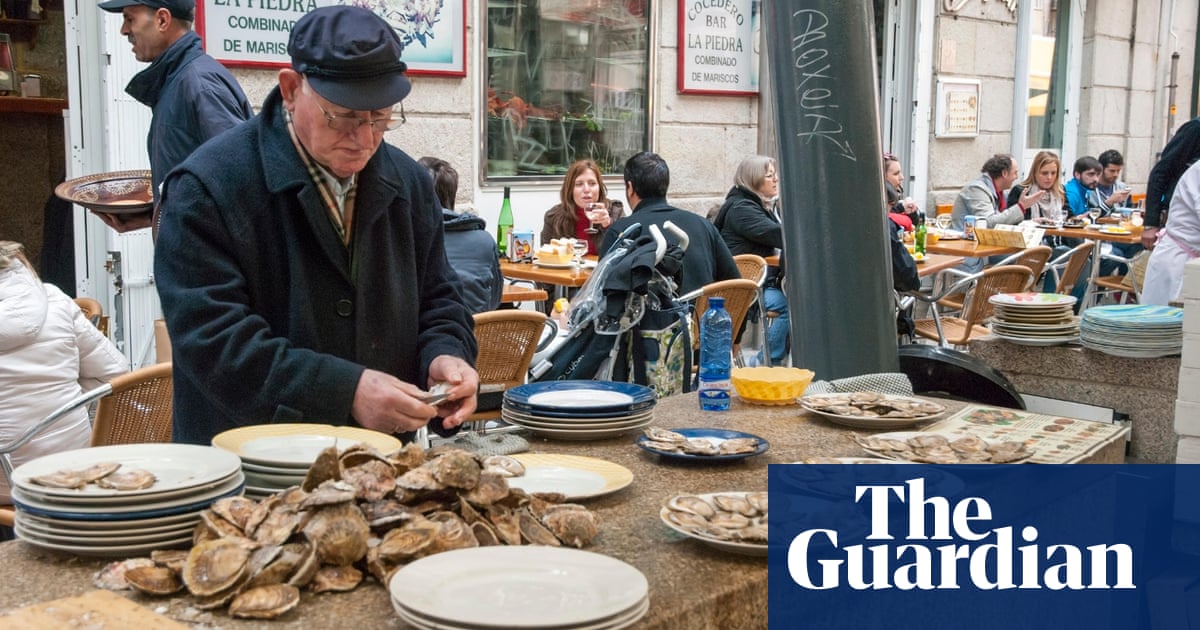Photo credit: www.theguardian.com
Galicia, located in the northwestern part of Spain, is often characterized by its dramatic coastline, which has inspired monikers like “end of the world” and “coast of death.” This reputation comes from the powerful Atlantic waves that batter its rocky shores. However, there is a gentler, more alluring aspect to this region found within its numerous inlets, known locally as rias. According to folklore, these inlets were shaped by the touch of God during the creation of the world, providing not just beauty but also an abundance of high-quality shellfish that draws visitors to the city of Vigo. As the largest fishing port in the European Union, Vigo cascades down a hillside into a tranquil estuary that is home to marinas, industrial docks, and a bustling fishing port.
The rich interaction between the freshwater of rivers and the salty Atlantic Ocean creates a nutrient-rich environment that fosters an array of delicious seafood. This has led to a deep-rooted maritime culture among the inhabitants of Vigo, aptly referred to as Vigueses. Their connection to the sea is not merely historical but continues to this day, as seafood, especially fish caught by local trawlers and various shellfish, dominates the dining scene at numerous taverns and restaurants throughout the city.
During my visit, I encountered a striking statue of a bearded man resting atop four giant octopus tentacles, a nod to the adventures found in Jules Verne’s classic, 20,000 Leagues Under the Sea. The story drew inspiration from Vigo’s rich maritime history, including tales of treasure hidden beneath the waves from ships possibly sunk by the infamous pirate Francis Drake centuries ago. Despite numerous raids and invasions, Vigo has persisted and thrived, establishing itself as a vibrant fishing hub.
Curious about the mollusk farming in the estuary, I embarked on an exploratory venture with Pablo Mariño from Bluscus. His traditional fishing boat, known as a bateiro, took me over the placid waters toward wooden rafts called bateas. They are part of a significant marine industry that not only exports seafood globally but also supports around 15% of Vigo’s workforce.
At our destination, Jorge, the enthusiastic manager of one such raft, shared insights into the mussel farming process that produces tender, flavorful shells. Despite a decrease in production rates, his passion for the craft shone through as he proudly showcased a robust cluster of mussels, noting with humor that he himself is allergic to them.
Next, I met Severino Casal, a former fisherman now leading coastal tours in his 1970s wooden vessel Nuevo Migueliño. He reflected on his love for the sea and the changing fishing industry, grappling with challenges such as overregulation, overfishing, and environmental shifts.
As I transitioned to sampling Vigo’s seafood, I found myself at Calle de las Ostras, an area famous for its freshly shucked oysters. I indulged in a serving of half a dozen delectable mollusks, a delightful experience with a glass of chilled albariño, the local wine. As I savored each bite, I appreciated the area’s history where once women dominated the trade, though the stands now are more commonly run by men.
Moving upward to Casco Vello, Vigo’s charming historical district, I navigated through steep streets adorned with granite houses and inviting eateries. As the sun set, the warm glow of street lighting enhanced the area’s romantic ambiance, making it an excellent setting to enjoy local delicacies. A visit to Taberna A Pedra provided a feast of grilled razor clams, cockles, and cuttlefish, with warm bread to soak up the rich flavors.
The culinary adventure continued at Valdevez, a trendy spot boasting a varied menu that included tender Galician-style octopus and perfectly grilled scallops, celebrated among locals and visitors alike. In contrast, the elegant Praza do Porta do Sol showcased architecture from the late 19th century, a time when Catalan entrepreneurs fueled Vigo’s booming canning industry. This district seamlessly blends nightlife with a vibrant shopping experience.
For a modern twist on traditional dishes, Restaurante Crudeza offered exquisite ceviche and tartare, prepared by a talented Venezuelan team. After my meal, I took a steep hike to the El Castro fortress, built in the 17th century to safeguard against English incursions. The stunning parkland surrounding the fortress provided breathtaking views of the nearby Islas Ciés and fishing villages.
Winding through the city, I eventually discovered Enxebre, a contemporary restaurant notable for its creative take on traditional Galician cuisine, offering an impressive tasting menu at an accessible price point.
In the serene Alameda da Praza de Compostela, surrounded by lush gardens, I uncovered La Mar Salada, where expertly prepared Atlantic fish and delightful rice dishes became the highlight of my culinary exploration.
For my final evening, I ventured into the hilly Rías Baixas wine country to experience a unique Galician tradition — the furancho. Hosted by Juan Vidal and Lorena Cancelas of Guía Furanchín, this gathering in a family’s home or garden allowed us to enjoy homemade tapas paired with young wine, exemplifying the region’s pastoral life.
As we shared jugs of both robust red and white wine over a spread of empanadas, croquetas, and other local dishes, I felt a connection to the communal spirit unique to Galicia.
Vigo presents a treasure trove of experiences for both adventurers and food enthusiasts, whether on foot, by bike, or with a vehicle. The region invites exploration, from Cambados, the heart of albariño production, to the natural splendor of Corrubedo, offering a diverse range of activities and exceptional seafood. In addition, picturesque towns like Baiona and Pontevedra add to the allure of the area.
Ultimately, Vigo captivates with its blend of seafaring heritage, culinary excellence, and rich traditions, making it a remarkable destination for any traveler.
Source
www.theguardian.com

